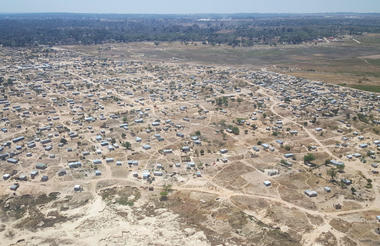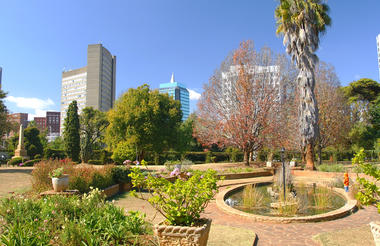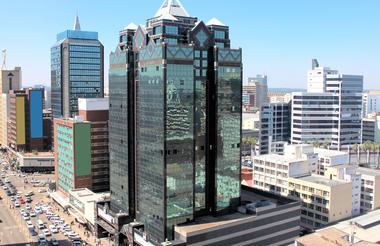Lusaka, Zambia’s cosmopolitan capital, is a typical modern African city. Set on open plains at the heart of the country, northeast of the capital, the city serves as Zambia’s rapidly developing economic and transport hub with new buildings popping up everywhere and many chain stores and shopping malls springing up all over the sprawling suburbs. Lusaka’s wide, tree-lined boulevards feature a range of tourist facilities including hotels, guest houses, coffee shops, fast food outlets, nightclubs, and pubs. Visitor attractions include the Henry Tayali Gallery, showcasing local artworks; The National Museum, covering Zambia's colonial history; the Lilayi Elephant Orphanage; and a number of colourful markets. Don’t miss the popular Munda Wanga Environmental Park where you will find a Wildlife Park and Sanctuary, Botanical Gardens, Recreational Village, and an Environmental Education Centre.
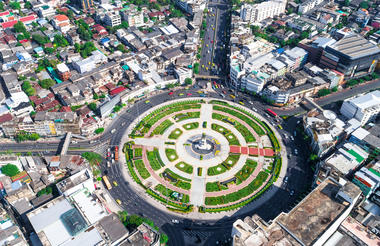
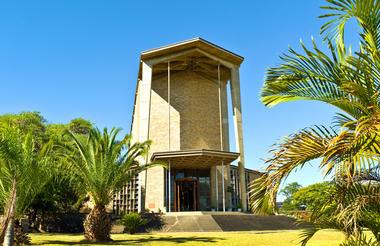
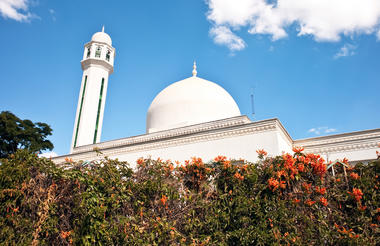
As previously described



Bordering the Luangwa River, the northern and southern Luangwa National Parks contain some of the most breathtaking and untouched wilderness in Africa. As a result of this and the parks’ successful anti-poaching campaigns, the area has developed into a world-renowned wildlife haven. The South Luangwa National Park is renowned for its walking safari, which allows visitors to view elephant, hippo and even lion close-up under the supervision of professional and knowledgeable armed guides.
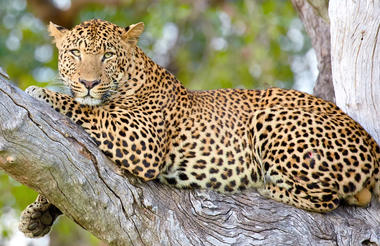
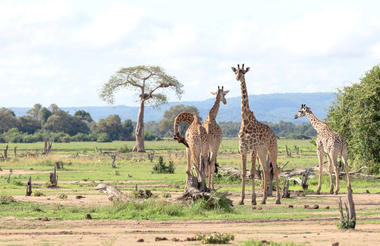
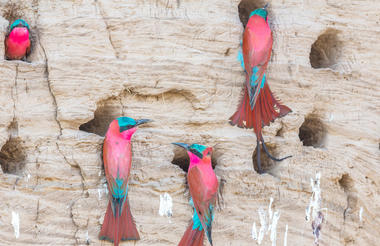
Straddling the border of northern Zambia and the southern Democratic Republic of Congo, the Copperbelt is a natural area known for its copper, the source of Zambia's mineral wealth. Decades ago, this was the largest copper-producing region in the world. Today, it serves as Zambia's main industrial base. Visitors can look forward to several activities, including picnicking at Mindolo Dam, discovering the beautiful Mwekwera Falls, exploring the Chembe Bird Sanctuary and visiting Ndola's Copperbelt Museum historical artefacts with malachite jewellery, traditional crafts and copper bracelets for sale. Don't miss the Chimfunshi Wildlife Orphanage set on the banks of the Kafue River, offering incredible bird watching and a rare once-in-a-lifetime opportunity to get up-close to wild chimps.

As previously described
Set in Zambia, the Kafue National Park is the largest park in the country and the second-largest in Africa. The contrasting landscape of the Central Kafue features riverine bush, miombo and savannah woodlands, vast open plains and majestic granite outcrops. Visitors can enjoy the pristine natural beauty of the diverse scenery and its natural, unspoilt beauty. Drive along the Spinal Road for a chance to discover the most remote parts of the Central Kafue National Park. Don't miss the opportunity to spot a wide range of African wildlife with regular sightings of puku, impala and bushbuck and catch a glimpse of the countless bird species that call this area home.
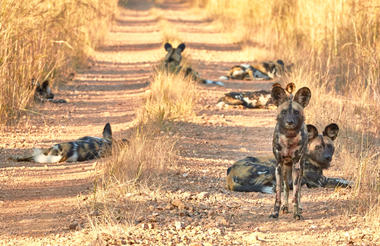
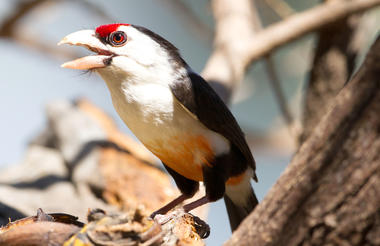
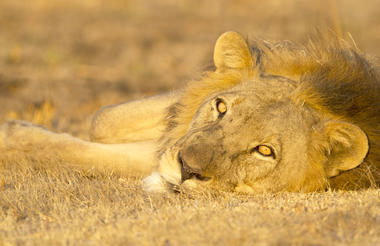
Zambia’s flourishing border town, Livingstone, or Maramba, is situated in the South Province of the country. The British colonial city is a tourism centre for the nearby Victoria Falls, Mosi-oa-Tunya National Park, and the Zambezi River. Continuously growing, this romantic destination is rich in culture and history, with a host of adrenaline-infused experiences to choose from including bungee jumping, abseiling, gorge swinging, white water rafting, kayaking, canoeing, and jet boating. For visitors seeking a more relaxed experience, there are countless other activities on offer too. Visit the fascinating Livingstone Museum, take a helicopter flight over the roaring fall, or experience a superb game drive in the UNESCO-listed Mosi-oa-Tunya National Park, home to African elephants, hippopotamus, and an impressive variety of bird species.
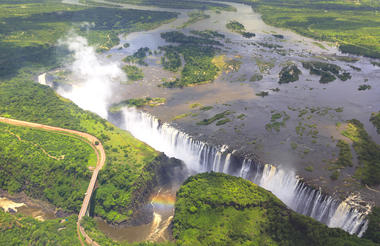
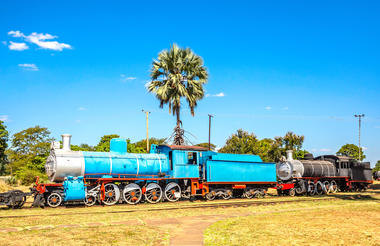
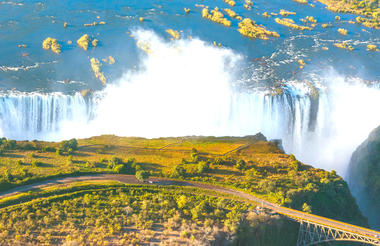
Savuti, also known as Savute lies in the heart of Botswana’s beautiful Chobe National Park.
This dynamic wilderness is a sweeping expanse of savannah brooded over by several rocky outcrops which guard a relic marsh and the dry channel that was once its lifeline. The Savute goes through wet and dry cycles, where wild dogs hunt in the dry river channel where crocodiles swam only twenty years ago. Visitors to this spectacular area can spot abundant wildlife including: a variety of birds, elephants, antelope, lion prides, black-backed jackal, bat-eared foxes, tsessebe, kudu, hyena, cheetah Cape buffalo herds, and thousands of migrating zebra and wildebeest.
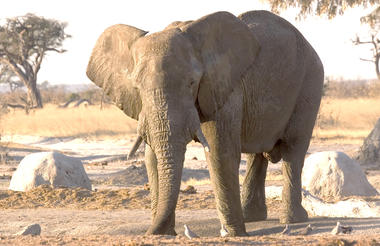
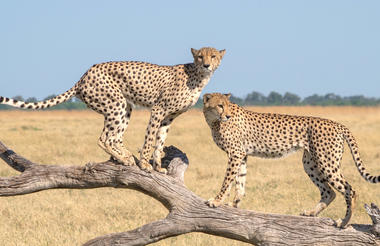
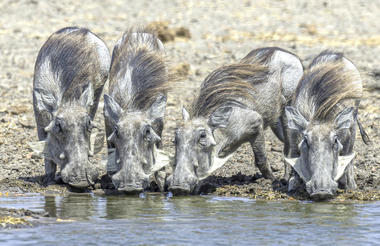
Tucked away in the northeastern corner of Botswana, on the banks of the famous Chobe River, the scenic little town of Kasane rests on the doorstep of the spectacular Chobe National Park. There are no boundary fences separating the village from the park and game such as elephant and hippo are often spotted roaming around the town. If on the lookout for elusive game, pay a visit to the Sedudu Valley Road, where large dead trees provide temporary homes for leopards. Within Kasane, an ancient baobab tree stands on display, once serving as a local prison. Visitors can look forward to a multitude of activities including: enjoying a game drive through the park, taking a sunset cruise down the Chobe River, visiting a local village or jumping on a day trip to the breathtaking Victoria Falls.
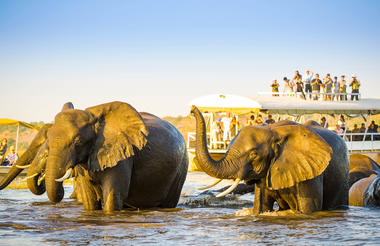
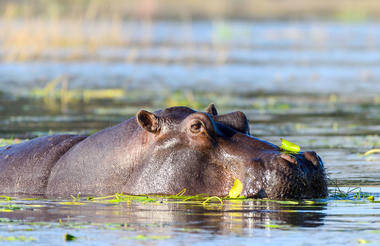
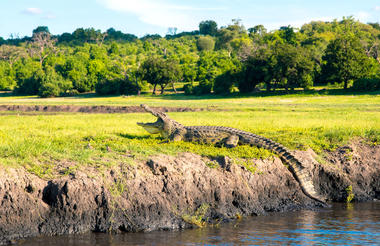
Situated in east Botswana near the border of Zimbabwe, Francistown is the second largest city in the country. Known as the gateway to Maun and Kasane in the north, it serves as an excellent stopover for tourists as it is conveniently located along the main road from Gaborone to Kasane. Dubbed the ‘Capital of the North’, Francistown was originally started as a gold rush and mining town and today it has developed into a thriving urban centre. Visitors can enjoy several attractions including: the Supa Ngwao Museum, exhibiting traditional wood carvings and local cultural displays; the Domboshaba Ruins, a series of centuries-old stone walls and enclosures; and Tachila Nature Reserve, inhabited by abundant wildlife such as hyena, warthog, leopard, kudu and much more.

North-eastern Botwana’s Boteti River, within the Makgadikgadi Pans National Park, lies on the grounds of an ancient lake, within a region where some of the first ‘homo sapiens’ (humans) lived. This area is an essential part of the massive annual migration - visitors can look forward to seeing enormous herds of oryx, wildebeests, impalas, zebras, and springbok as well as elephants and hippopotamuses along the riverbank. The river also provides prime bird-watching opportunities, with large flocks of flamingos and numerous other species calling it home. Besides the usual nature reserve activities, try taking a small chartered plane for the best views of the herds; go quad biking across salt flats and sleep there under the stars, or take a cultural tour to see ancient tribal sites.
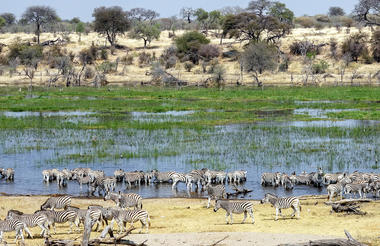
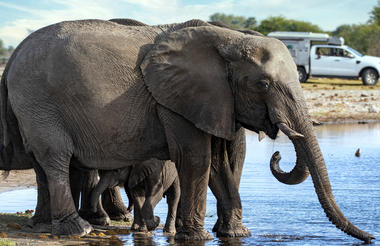
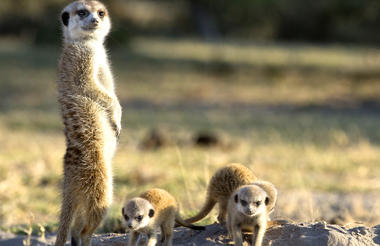
Set on the banks of the beautiful Thamalakane River in northern Botswana, Maun is the third-largest town in this spectacularly scenic southern African country. Maun is the starting point for most expeditions into the Okavango Delta and as a result, has developed into a bustling metropolis that is considered Botswana’s tourism capital. Area attractions include a renowned riverboat that offers cruises up and down the Thamalakane River; the forest groves of the Maun Game Reserve; and Moremi Game Reserve, home to hippos, lions and rhinos. Maun also serves as the jumping-off point for many safaris and air charters as well as offering private 4x4 rentals. Don’t miss the opportunity to visit the Nhabe Museum exhibiting the local history, art and culture of the Ngamiland region.
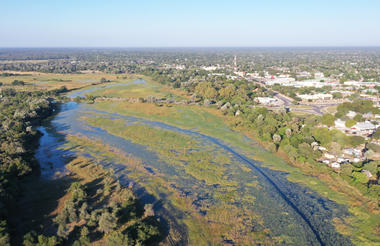
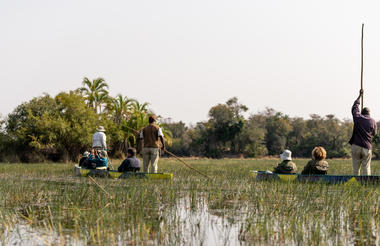
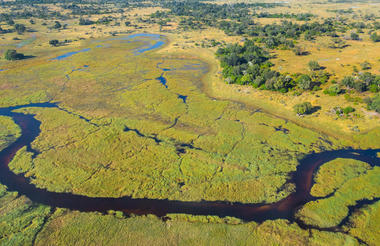
As previously described
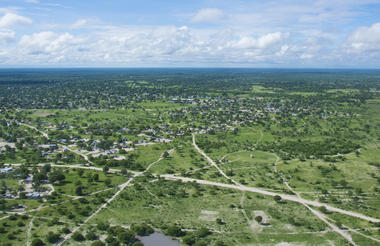
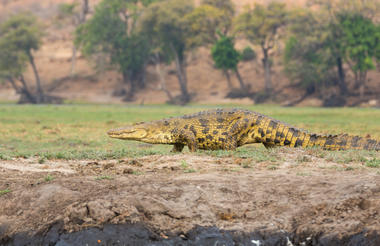

Located in the far reaches of northwestern Botswana, the Tsodilo Hills mark the highest point in the country. Abruptly rising 400 metres from the vast western Kalahari, these hills consist of four distinct mounds: the female, the male, the child and an even smaller ‘kopje’. Declared a UNESCO World Heritage Site, the famed Tsodilo Hills are home to more than 4000 remarkable rock paintings and considered a sacred space for the San people. It is said that the Tsodilo Hills are one of the world’s oldest historical sites, which have been inhabited on and off for the last 60 000 years. Visitors can enjoy guided tours around this ancient spiritual mecca.



As previously described


Located in the southeastern corner of Botswana, just fifteen kilometres from the South African border, Gaborone serves as the capital of the country. This lively city is a large modern metropolis with world-class hotels, glitzy casinos and a profusion of restaurants and shops. The National Museum, with its excellent exhibits, is a must for culture vultures, while the Gaborone Dam and Nature Reserve – both within the city boundaries – will appeal to sporty and outdoorsy types. Attractions within easy driving distance of the city include the St.Claire Lion Park, the Thamaga Pottery Village, and the ancient rock engravings of Matsieng.
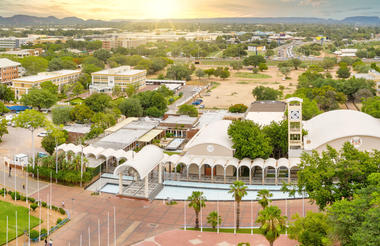


Known locally as Mosi-oa-Tunya—“The Smoke That Thunders”—Victoria Falls is one of the world’s great natural landmarks. Straddling the Zambezi River between Zambia and Zimbabwe, it forms a vast curtain of water that fills the air with mist and sound. The Zimbabwean side grants the most dramatic views, where mist rises like ghostly curtains and rainbows arc through the spray. Measuring about 1,708 metres across, it is regarded as the largest single continuous sheet of falling water on Earth. The adjacent town of Victoria Falls provides a convenient base for exploring the region, with a wide range of activities from scenic flights and microlight trips to white-water rafting, bungee jumping, kayaking, and safaris into Chobe National Park.
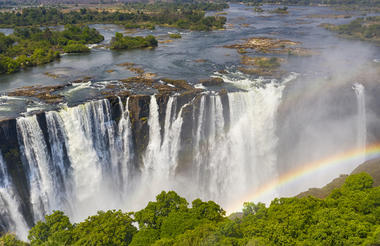
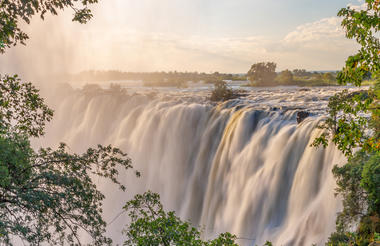
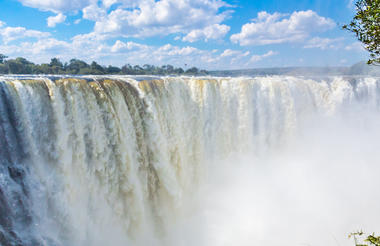
Located in western Zimbabwe, Hwange National Park (formerly Wankie Game Reserve) is the largest natural reserve in the country and is famous for its rich diversity of wildlife. Home to one of the biggest elephant populations in the world, as well as around 100 mammal species, the park is a wonderland for animal lovers. Several protected animals inhabit the awe-inspiring open landscapes, including the endangered wild dog, critically endangered black rhino, and rare roan and sable - along with lion, cheetah, and around 500 bird species. Adventurers can look forward to guided bush hikes, game drives, and horse riding safaris, all of which offer excellent photographic opportunities. Hwange boasts several unique natural features, most notably the natural seeps such as Nehimba and Shakwanki animals dig for water.
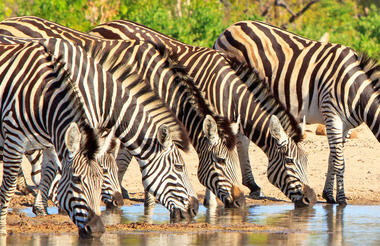
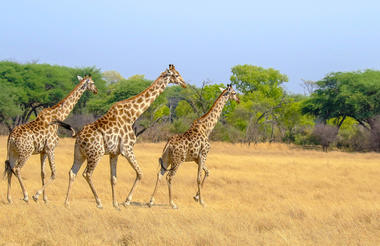
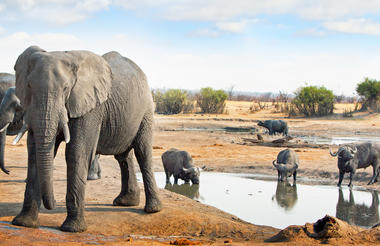
Situated in the heart of Matabeleland in southwestern Zimbabwe, Bulawayo is the country’s second-largest city. It is named after the royal kraal of Mizilikazi - founder of the Matabele Nation. This historic city features wide tree-lined avenues bordered by colonial-style buildings. It serves as a gateway to the nearby Matobo National Park - a highlight of the area- home to abundant wildlife and plant life. Visitors can look forward to a variety of museums including the country's main museum, the natural history museum; as well as exploring the Chipangali Wildlife Orphanage and discover the ancient Kame Ruins, a UNESCO World Heritage Site as it is one of southern Africa's magnificent Late Iron Age ruins.



Idyllically located in the spectacular Matobo Hills, the renowned Matobo National Park is known for its rich human history, its remarkably diverse flora and fauna and its magnificent rugged terrain. This unspoiled natural wilderness features a range of massive red-tinged, granite boulders interspersed with gorgeous wooded valleys making it a dream destination for hikers, climbers and nature lovers alike. The reserve is compact, easily accessible and is home to an impressive range of African wildlife including the highly endangered black and white rhinoceros, zebra, wildebeest, giraffe, cheetah, hippo, warthog and crocodile as well as Africa's largest concentration of leopard and black eagles. This unforgettable national park serves as an ideal stopover for travellers heading to the popular tourist sites of Hwange and the majestic Victoria Falls.
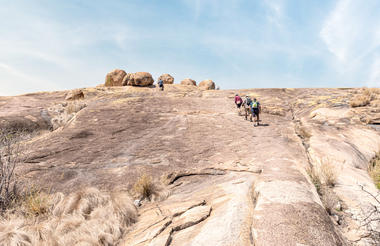
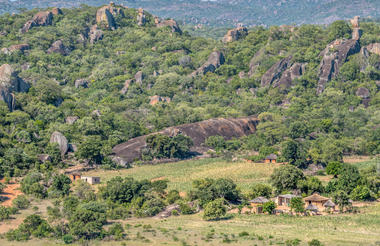
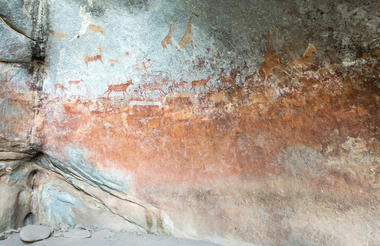
Situated in southeastern Zimbabwe, the capital of Masvingo Province, Masvingo town was formerly known as Fort Victoria. It is located near the Unesco-listed Great Zimbabwe National Monument, the ruins of an ancient city of mysterious origins that dates back thousands of years and shows evidence of an advanced civilisation. Masvingo serves as an excellent base from which to explore several attractions such as this in the surrounding region, including beautiful Lake Mutirikwi Recreational Park, the enthralling Kyle Dam, and the Kyle National Reserve, home to abundant wildlife. Don’t miss the opportunity to visit the neighbouring Mushandike National Park, known for its stunning natural landscapes.
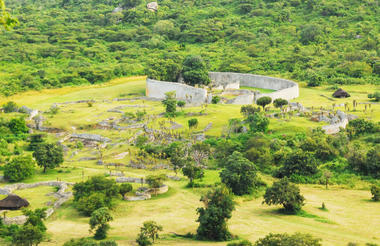
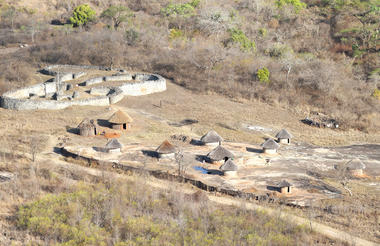
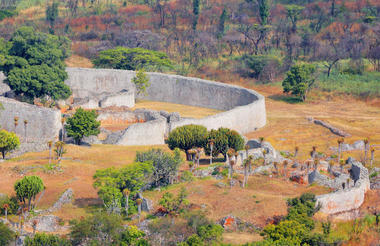
Resting in a scenic valley surrounded by mountains in Zimbabwe’s Eastern Highlands, Mutare is one of the largest cities in Zimbabwe known for its mountainous terrain, lush forests, melting pot of cultures and friendly, hospitable locals. Mutare has a small town feel but boasts all the modern conveniences of a large city. Points of interest include: the National Gallery of Zimbabwe, archaeological sites on Murahwa Hill, the Mutare Museum and Cross Kopje, bearing a memorial to African soldiers killed in World War One. The nearby Nyanga Mountains offer exquisite views, scenic hiking trails and a wealth of wildlife, while the Vumba Mountains are known for their lush vegetation, botanical gardens, and misty mystical mountain atmosphere.



The rolling hills of the 47 000 hectare Park Nyanga National Park, on Zimbabwe's Eastern Highlands, are home to a multitude of scenic rivers, refreshing streams and breathtaking waterfalls. The park boasts both Zimbabwe’s highest mountain peak and its highest waterfall and the elevated altitude provides a cool and pleasant climate and fresh mountain air, perfect for rest, relaxation and plenty of outdoor adventures. The mountainous terrain and its sparkling fresh water sources offer excellent opportunities for fly fishing, sailing, canoeing, swimming, and hiking. Visitors are likely to encounter a variety of fascinating wildlife including, among others: kudu, zebra, impala, sables, and eland.



The planet’s most voluminous man-made lake, Kariba is a popular tourist destination that was created in the 1950s when the mighty Zambezi was dammed. It stretches for more than 200 kilometres along the border between Zimbabwe and Zambia, forming a natural boundary between the two countries. The lake’s waters are home to abundant wildlife including: crocodiles, hippos, fish and aquatic birds, while its shoreline and islands are rich with terrestrial game such as elephant and buffalo. It has become one of Zimbabwe’s main tourist attractions offering houseboat holidays, fishing safaris and wonderful game viewing experiences.
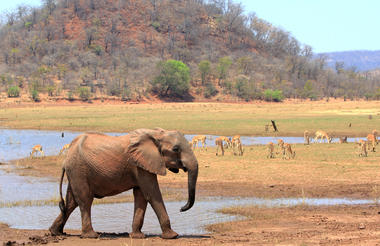
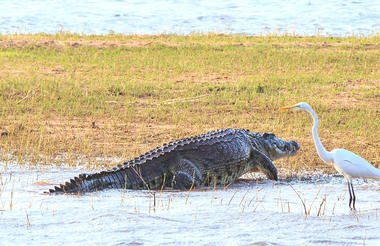
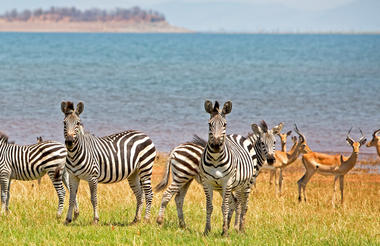
Zimbabwe’s capital city is the country’s most cosmopolitan and contemporary destination, dotted with restaurants and bars, shops and markets. Its proud historical and cultural heritage is reflected in several well-preserved old buildings and informative museums, while its many parks and gardens provide a pleasant contrast to the bustling urban sectors. Located within easy reach of the city centre are the Mukuvisi Woodlands, comprising over 250 hectares of rich natural wilderness, while the magnificent Kopje – a rocky hill to the southwest of Harare – offers great views over the city. Other city highlights include the fascinating National Gallery of Zimbabwe, the abundant Zimbabwe Museum of Human Sciences, the Chapungu Sculpture Park, and the gorgeous National Botanic Garden, filled with a variety of rare African plants as well as exotic plants from around the world.
